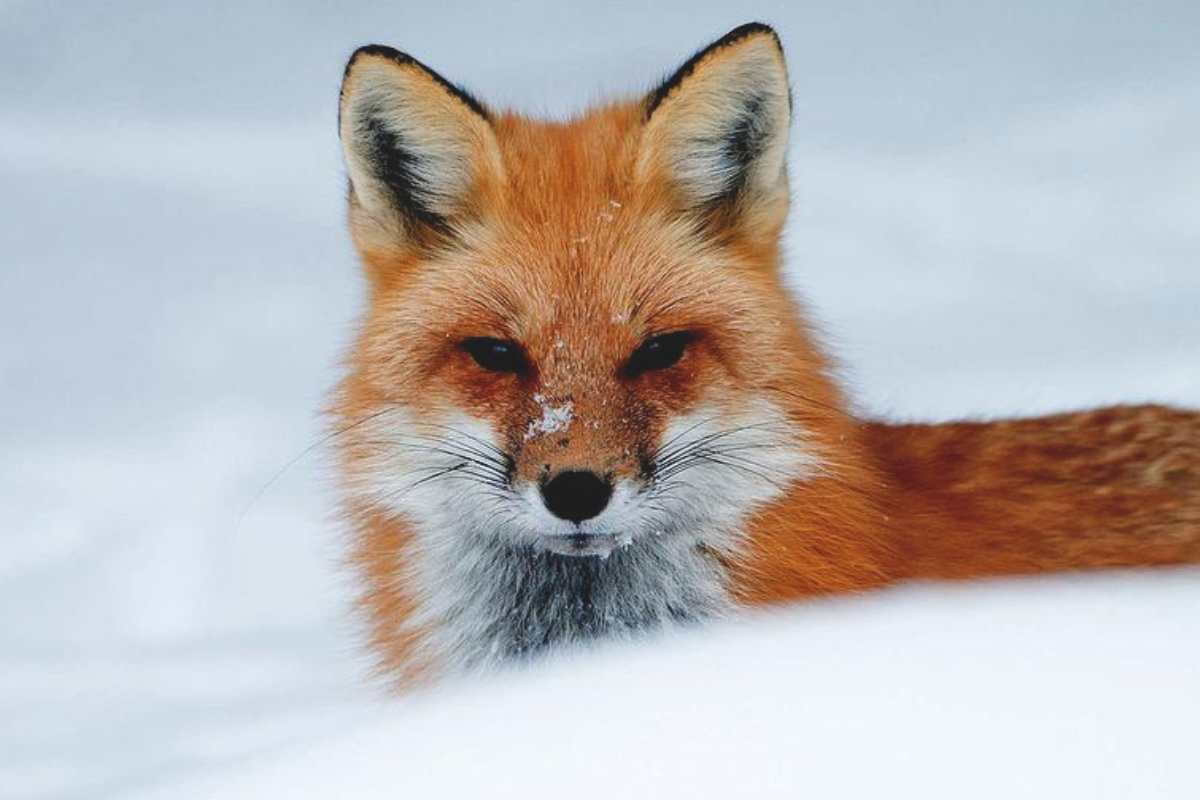On the frontlines
By Nicole Rivard
This fall I’ve had the thrill of having a few red foxes cross my path in Darien, Connecticut, where Friends of Animals is headquartered. They always seem so alert, present and sure of themselves, especially when mousing. That’s the pounce you see after they hear the telltale rustle of their prey. More on that later.
Whenever I have an animal encounter that really catches my attention, I like to turn to one of the books I have that interpret the messages and warnings of wildlife. The concept of animal-as-teacher is a basic tenet in many Native American traditions, and it intrigues me.
According to Animal Energies, the fox’s message is: It’s time to try a subtle and clever approach.
The foxes warning is: Don’t be too crafty for your own good.
Just the notion of the fox having a message for me makes me feel more connected to the animal and to wild places. I believe that’s a win-win for me, wildlife and the environment.
Unfortunately, not everyone feels the same way.
On the social media platform Nextdoor, where people connect with neighbors and find local businesses and resources, too many people are there to sound the alarm and stoke fear if a fox, coyote or black bear dare wander through their yard or neighborhood.
They seem to have forgotten that wildlife was here first.
For example, red and gray foxes were in Connecticut when the colonists arrived, according to the Connecticut Dept. of Energy and Environmental Protection.
The red fox was an inhabitant of mixed forests and open areas, while the gray fox inhabited more dense woodlands. Gray foxes are not observed as frequently as red foxes due to their reclusive nature and more nocturnal habits. They tend to be active from the late evening hours until dawn.
Plus, foxes are an important part of the ecosystem. They help control populations of rodents and rabbits in urban, suburban and rural areas. They also disperse seeds by eating fruit.
Of course, all wild animals should be treated as such and given their space and not cornered, but people need to understand that foxes are naturally elusive and timid. They are not dangerous to humans (rabid foxes are exceedingly rare).
People often worry that if there’s a fox and fox kits denning in their backyard, it will kill their cat, dog or child. Nothing is further from the truth, says the experts at the Canid Project, which provides the only species-specific fox rehabilitation program in Louisiana and an education program that focuses on humane best practices for co-existence.
Red foxes and gray foxes eat small prey, like mice, voles, even insects. The biggest animal they will hunt is a large rabbit. A rabbit doesn’t have the teeth, claws or ability to hurt a fox like a cat or dog would. Through self-preservation and instinct, foxes know what is safe for them to hunt, so rest assured—it’s not cats or dogs.
To prevent foxes from becoming habituated to humans, never feed wild foxes. A fed fox is often a dead fox.
If you ever see a fox running off a cat, dog or human it is most likely because they are too close to the fox’s den of babies, according to the Canid Project. This is normal behavior called “escorting.” It’s simply foxes being great parents and keeping threats away from their offspring—something to be admired.
If you have a den in your backyard: enjoy it! In March and April, young foxes will begin venturing out of the den at 4 to 5 weeks old. Keep in mind that the parents have 2 to 3 total dens, and the mother begins moving the kits around once they hit about 8 weeks old, or earlier if she feels the natal den is threatened.
If you do not want them to den again in your yard, after dispersal time in August or September, you can consider fox-proofing the area, so they do not den there again. Repair broken floorboards on porches and close openings that lead under the house or sheds before spring, using hardwire cloth or galvanized welded wire that is at least 14 to 16 gauge.
Fun fox facts
I loved discovering that foxes mate for life and although they are solitary predators, a mated pair comes together during breeding season to raise their offspring. Raising young is truly a family affair—one non-breeding female from last season’s litter will stick around to help her parents care for the new babies.
Another interesting thing about foxes: They are the only canine with some climbing ability, and the very adept gray fox can scoot up a tree in cat fashion!
But perhaps the most fascinating thing about foxes—researchers believe that they harness Earth’s magnetic field to hunt when their prey is hidden. Other animals, like birds, sharks and turtles, have this “magnetic sense,” but the fox is the first known to use the field to judge distance rather than just direction and to use it to catch prey.
Researchers suggest that the fox sees a ring of “shadow” on its retina that is darkest toward magnetic north, and just like a normal shadow, always appears to be the same distance ahead. The fox moves forward until the shadow lines up with where the prey’s sounds are coming from, at which point it is a set distance away.
It all makes perfect sense to me, because overall I think foxes are simply magnetic.

